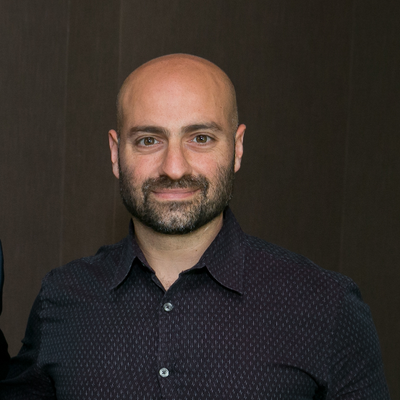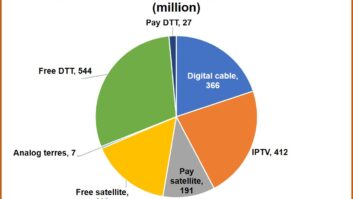In BTTL VI and VII, Accenture described how the video market is changing through digital disruption and gave practical, executable insights on how digital businesses can adapt. It introduced the S-curve framework for transformation: an approach where investments that drive growth in core revenue models also underpin future growth in new areas. It surmised that this was possible only by unlocking innovation and exploiting trapped value in your current organisation, by decoupling from legacy and taking a data-driven approach.
In this latest issue of Bringing TV to Life, Accenture digs deeper into why innovation remains essential to your success, and how you can embrace creative ideas and approaches to keep it alive in your products, engineering, operating model, workforce, commercial models and ecosystems.
While broadcasters may have a digital offering, it’s usually for marketing or some small ancillary revenue, with most of their technology organisation dedicated to transactional backend and automation services, according to Sef Tuma, managing director & global lead, Accenture Digital Video.
Tuma told TVBEurope that this results in a significant amount of inefficiencies in terms of how they position themselves on long term value.
Meanwhile, operators have been able to bundle product offerings into compelling consumer propositions. At the same time, they have struggled to link product innovation to broader commercial innovation or to advanced marketing / service capabilities that can influence product loyalty and customer lifetime value.
Platform companies on the other hand are demonstrating extremely strong capabilities: “They can build highly innovative and capital efficient platforms that allow them to quickly respond to market demands, while continuously adding value through a strong focus on data-driven capabilities,” Tuma added. “At the same time their ability to operate efficiently and at scale in a broader ecosystem where partner businesses have varying levels of technical maturity, is more difficult, and requires a lot of effort on their part.”
The report discusses how companies can start changing the way they invest and operate to continue to enable their core business, while simultaneously driving capital efficiencies through strategic investments that give them the flexibility to pivot to new business models.

“They must understand that there will always be a concern around cannibalising the business, and a pressure that they are potentially taking away resources or investments from the revenue channel that makes the most money at a particular time,” said Tuma.
Tuma went on to mention the S-Curve model, which is designed to help manage the three waves of transformation and lies behind all of the transformation ideas discussed in the paper:
1. Transform the core: investing in driving efficiencies in your core business to create room for investment elsewhere
2. Grow the core: investing in core capabilities that will unlock new growth in the existing business backed by digital capabilities, while also enabling the company to explore new opportunities in the future
3. Building the new: incubate new, disruptive ideas; the Next Big Thing on a similar foundation as the core in order to reduce the capital investment pressures on opportunistic business models
“You’ve got to invest in your core business, and use that as a foundation for new businesses, and do that in a way that allows you to decide when would be an appropriate time to shift business models, even at the expense of your core business,” Tuma explained. “The path is clear but the decision for traditional companies can be scary. However, without the foundation to pivot to the new, navigating disruption will be almost impossible.”
The general digitisation of customer interaction is in fact driving the innovation curve. Digital IP-based technology provides information in both directions which then allows for these touch points to be optimised.
Companies need to determine the foundational pieces that allow optimisation while bolstering their traditional business models: “Invest to make those traditional business models work for as long as they can,” said Tuma. “Content intelligence, advertising optimisation, customer lifetime value maximisation, and strong relationships will eventually enable most traditional models, and allow them to optimise their revenues more efficiently.”
Tuma went on to describe a culture shift which stems from associated technical organisational models and their funding: “This area has traditionally been heavily-siloed, and has built a certain culture of cost centre, of protectionism, and potentially of lack of flexibility until business requirements are clear,” he said.
While it is much easier to use digital technology to control costs and measure effectiveness, some are finding it hard to get to this level of agile transformation due to the way they have been built culturally.
“It’s about ambition and expectation,” Tuma remarked. “We built the S-Curve to soften the risk associated with the potential disruption of pivoting to newer business models and give those who are looking at the next three to five years a playbook on how to ensure they’re baking sustainability into the overall business as digital disruption accelerates.”
“Strategy is not that interesting without execution. You must be able to take your capital investments, augment your advantages to enable growth, drive efficiencies where possible, inject new capabilities to compliment your existing skills, and allow yourself the flexibility to use multiple monetisation models while creating free cash flow.”
“I think this is a challenge that’s going to affect every player in the industry,” Tuma concluded. “No one has fully cracked it yet but certain companies who have invested in operating models along with digital platform transformation are certainly much better positioned. In the end, it takes courage, an agile operating model transformation methodology, a careful investment strategy, and the right executive buy-in and governance to move forward with confidence.”
Download Accenture’s Bringing TV to Life VIII report here.







